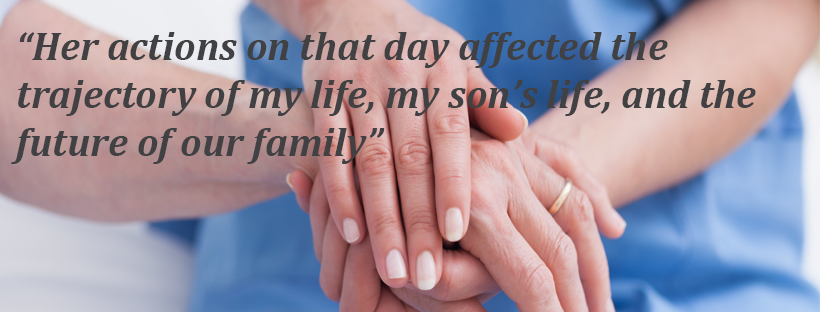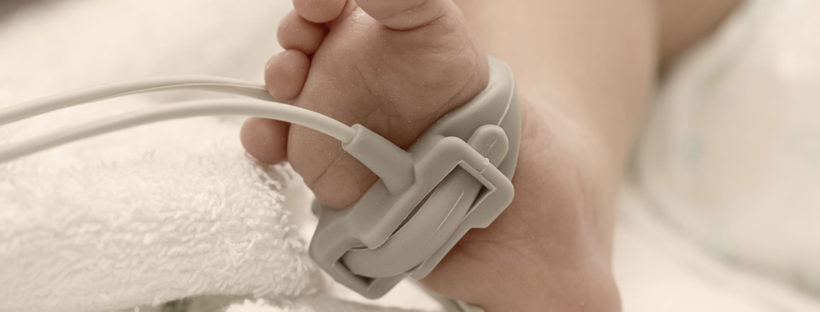“Humiliating and Traumatic,” these are the words from a survivor of sexual abuse when asked to describe her labor and delivery. All too often, women who have been sexually abused carry their wounds into the delivery room. And, all too often, these unresolved traumas rear their ugly heads and cause complications, from labor dystocias, to full blown anxiety attacks that result in a woman completely shutting down. These are some of the more challenging labors to manage.
According to the U.S. Department of Health, one in four girls and one in five boys will be sexually abused before they turn 18. One in five women and one in 71 men will be raped at some point in their lives. This is in many ways a silent epidemic. Sometimes victims don’t disclose their abuse to their care providers. The reasons vary, and can range from ongoing suffering of the traumatic effects of the abuse and avoiding reliving it, to a continuing sense of shame that victims may have never come to grips with.
What are some possible signs of sexual abuse?
According to When Survivors Give Birth: Understanding and Healing the Effects of Early Sexual Abuse on Childbearing Women, having a constellation of these symptoms can indicate a history of abuse. Having one or more of the following should trigger a red flag and considerations for a woman’s care during childbirth:
- Not able to feel fetal movement. Some women have “numbed” that part of the body
- Hyperemesis gravidarum
- Chronic pelvic pain
- Missed prenatal appointments
- Panic with vaginal exams
- Extreme anxiety with IV starts
- Disassociation that manifests as if she’s going into a trance
Many of these symptoms can understandably occur in women who don’t have a history of sexual abuse, but when a woman has two or more, it’s reasonable to suspect that such a history is possible. These symptoms can stem from PTSD, which is triggered by a woman’s perception of loss-of-control, as well as the physical sensations that occur during pelvic exams, labor, and birth. By rushing through procedures, and not allowing the woman time to process (if possible), understand, and consent to what is happening to her body, we can inadvertently trigger a posttraumatic reaction.
Admittedly, the discussion of sexual abuse is a tough topic for those on either end of the conversation. We often just touch on the subject while reviewing women’s admission histories, and then move on. Fortunately, we don’t need the admission of abuse to employ strategies developed for survivors. It’s actually much more common for caregivers to pick up on non-verbal cues and then tailor their care. A real tragedy is the guilt and shame survivors can feel after giving birth. So, like we would do for any woman, it’s best to acknowledge the struggle of labor and birth, the strength a woman demonstrated, and the effort and precious reward she achieved.
What are interventions that nurses and other caregivers can provide?
- Explain as much as you can in advance, for example “If we run into an emergent situation there might be unfamiliar nurses coming in to help. I know this can cause anxiety, but I want to prepare you ahead of time in case it happens.”
- Always start with asking permission. From starting an IV to turning on the overhead lights, make sure to obtain permission before doing any procedures or making changes to the environment
- Go slowly with everything you do–this can be helpful in relation to a woman’s fear of losing control. Fast movements can be triggers. This is especially important when uncovering a woman or assisting her with positioning.
- Limit vaginal exams. These are especially traumatic and should be minimized. If a woman is having difficulty in relaxing enough to complete an exam, try making an agreement about when and why you can perform one. If a woman understands that the exams are being performed only when necessary, and with her consent, her anxiety is often more controllable during exams.
- Minimize people in her room. She might have issues with nursing students or residents, especially if they are male. Obtain her permission before any new staff come into the room, unless there’s an emergent situation.
What are things not to say?
- Intrusive interest-prying for details or descriptions of the abuse
- Minimizing the abuse: “Well, that’s over now.”
- Exaggerated concern
- Shock or disgust
- Pity
What are good things to say?
- “I can imagine that was very hard to share that with me. It takes a lot of courage to talk about and I respect you for doing that.”
- “Sometimes talking about these episodes can trigger strong feelings. How are you feeling right now?”
- And, it’s always essential to assess the woman’s current well-being “Do you feel unsafe in any aspect of your life?”
Not all survivors of sexual abuse have difficulty with pregnancy or childbirth, for some it can be empowering. For those who do struggle, recognize that we have a powerful opportunity to help them. We can communicate therapeutically to help change the woman’s focus from feeling out-of-control. We can employ care practices to avoid the woman feeling re-traumatizatized. And we can set the stage to promote healing and bonding with the newborn. In many instances it’s our tacit recognition and respectful and supportive care that facilitates healing, more than any words we could utter or medicines we could administer.
Where can I learn more?
- When Survivors Give Birth: Understanding and Healing the Effects of Early Sexual Abuse on Childbearing Women
- Simkin, Penny and Phyllis H. Klaus. Seattle: Classic Day, 2011. Print.
What are resources for my patients?
- National Sexual Abuse Hotline: 1800-656-HOPE
- RAINN: Rape, Abuse, Incest National Network, www.rainn.org
 Tasha Poslaniec has been a registered nurse for 17 years. She has been working in obstetrics for over a decade and is currently a Perinatal Quality Review Nurse and Childbirth Educator.
Tasha Poslaniec has been a registered nurse for 17 years. She has been working in obstetrics for over a decade and is currently a Perinatal Quality Review Nurse and Childbirth Educator.
She also writes about nursing and childbirth and has been published in the Huffington Post and the American Journal of Nursing. Pain control in childbirth has long been a topic of study and research for her.



 Evgeniya Larionova received her Bachelors of Science in Nursing from MGH Institute of Health Professions. She is a founder and an Artistic Director of AMGITS Drama&Poetry Club at the Boston Living Center. She is a member of the student Leadership Committee of the Harvard Medical School Center for Primary Care. Evgeniya is passionate about infectious diseases, community health and integrating holistic care in modern practices. In her spare time she plays in the Russian theater, enjoy reading, playing the guitar and hiking.
Evgeniya Larionova received her Bachelors of Science in Nursing from MGH Institute of Health Professions. She is a founder and an Artistic Director of AMGITS Drama&Poetry Club at the Boston Living Center. She is a member of the student Leadership Committee of the Harvard Medical School Center for Primary Care. Evgeniya is passionate about infectious diseases, community health and integrating holistic care in modern practices. In her spare time she plays in the Russian theater, enjoy reading, playing the guitar and hiking.
 There is a moment after labor when you realize that not only is your sweet little baby a patient, but that you are too. At least for me, that was something that hadn’t really registered. On the day that my little baby girl Isla was born I very quickly began to understand we would both need a ton of care in the hospital and at home.
There is a moment after labor when you realize that not only is your sweet little baby a patient, but that you are too. At least for me, that was something that hadn’t really registered. On the day that my little baby girl Isla was born I very quickly began to understand we would both need a ton of care in the hospital and at home.


 Michelle Collins is currently Professor of Nursing and Director of the Nurse-Midwifery education program at Vanderbilt University School of Nursing. In addition to the teaching and administrative aspects of her job, she maintains an active clinical practice as part of the Vanderbilt School of Nursing faculty nurse-midwifery practice. Currently she is a blogger for Nashville Public Television for the popular series Call the Midwife.
Michelle Collins is currently Professor of Nursing and Director of the Nurse-Midwifery education program at Vanderbilt University School of Nursing. In addition to the teaching and administrative aspects of her job, she maintains an active clinical practice as part of the Vanderbilt School of Nursing faculty nurse-midwifery practice. Currently she is a blogger for Nashville Public Television for the popular series Call the Midwife.

 Jessica L. Grenon is the Director of Continuing Education Services at The Conference Exchange, where she has worked with AWHONN since 2007. She, her husband, and their two young children enjoy traveling and spending time with their extended family, especially with her twelve nieces and nephews.
Jessica L. Grenon is the Director of Continuing Education Services at The Conference Exchange, where she has worked with AWHONN since 2007. She, her husband, and their two young children enjoy traveling and spending time with their extended family, especially with her twelve nieces and nephews.



 Aimee Poe is an experience specialist at Verizon. She loves playing video games, watching movies, hanging out with her family, and flexing her creative muscle with various projects.
Aimee Poe is an experience specialist at Verizon. She loves playing video games, watching movies, hanging out with her family, and flexing her creative muscle with various projects.

